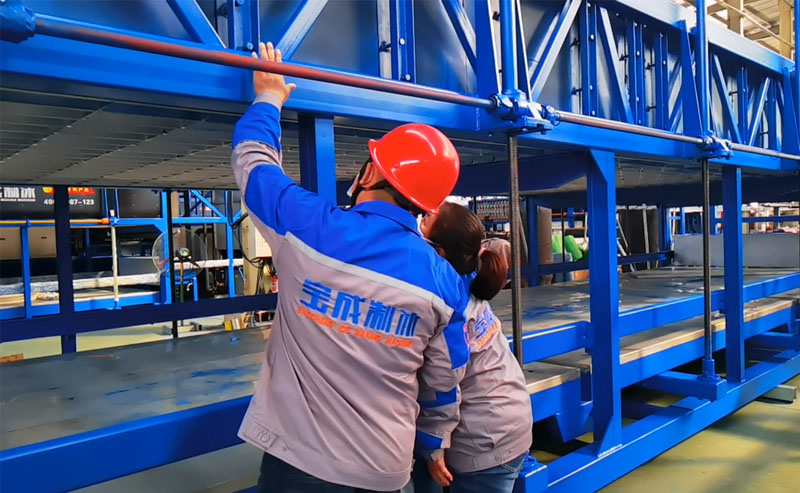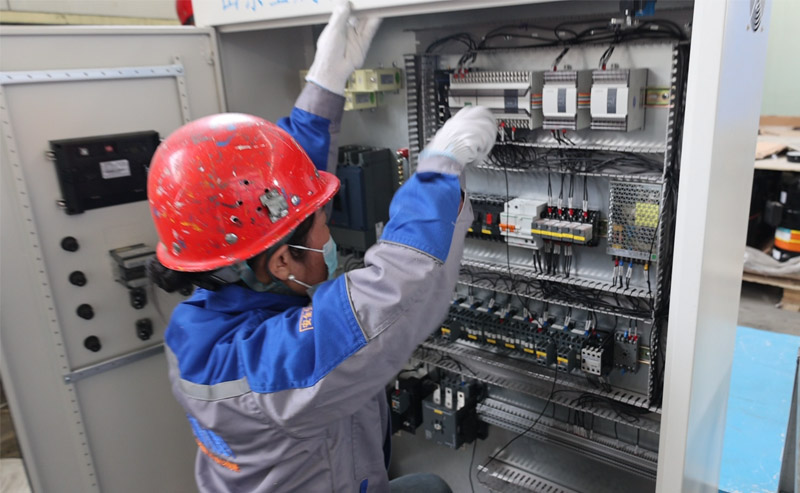In the world of industrial refrigeration, safety remains paramount. The industrial ice block making machine represents significant investment and potential risk if not properly managed. These complex systems, whether used in food processing, chemical plants, or fisheries, demand rigorous safety protocols to protect both personnel and equipment. This comprehensive guide outlines the critical safety guidelines for operating large-scale ice production equipment, focusing specifically on the 10 ton large ice block maker machine category that powers numerous industries worldwide.
The importance of these guidelines cannot be overstated. According to mechanical industry standards like JB/T 14567-2022, proper safety measures in direct cooling block ice machine operations significantly reduce accidents, improve equipment longevity, and ensure consistent production quality. From proper installation to emergency response, each aspect contributes to creating a secure working environment while maintaining optimal productivity in ice block manufacturing facilities.
Operator Qualifications and Safety Awareness
Industrial ice machinery operation requires specifically trained personnel to manage its complexities safely. The fundamental requirements for operators extend beyond basic equipment knowledge to encompass comprehensive safety understanding.
Professional Training and Certification
- Formal Qualification Programs: Operators must complete specialized training programs following established frameworks like the "Refrigeration and Air Conditioning Equipment Operator Safety Technology Training Outline and Assessment Standard" . These programs typically require at least 100 hours of instruction covering both theoretical knowledge and practical skills.
- Certification Requirements: Personnel must hold valid operation certificates specific to refrigeration equipment. As outlined in special equipment management systems, "Special equipment operators must obtain the 'Special Equipment Operation Certificate' before taking up their posts" . This certification ensures understanding of both operational techniques and safety protocols.
- Physical and Educational Requirements: Operators should be at least 18 years old, in good health without conditions that might impair their judgment or physical response, and possess at least a junior high school education level to comprehend technical instructions.
Regular Safety Training
- Periodic Refreshment Courses: Safety knowledge decays without reinforcement. The refrigeration industry mandates "review training cycles of every three years" with no less than 8 hours of dedicated safety instruction . These sessions update personnel on regulatory changes, new technologies, and lessons from incident analyses.
- Practical Drills and Simulations: Beyond classroom learning, regular practical drills ensure operators can implement safety procedures under pressure. The effectiveness of this approach was demonstrated during a power fluctuation incident at Jilin Petrochemical Company, where "the one-minute emergency response" protocol successfully prevented production disruptions.
- Safety Responsibility Awareness: Cultivating a robust safety culture requires each operator to understand their personal responsibility. This includes recognizing potential hazards in the automatic ice making machine environment, understanding the implications of improper operation, and committing to following established procedures without exception.

Equipment Installation and Environmental Requirements
Proper installation forms the foundation for safe operation throughout the equipment lifecycle. Whether dealing with a standard direct cooling block ice machine or a containerized system, specific installation criteria must be met to ensure operational safety.
Secure Placement and Foundation
- Stable Positioning: The machine must be placed on a level surface, with adjustments made using the bottom foot screws to ensure stable placement without rocking or vibration . This prevents unnecessary stress on components and reduces noise during operation.
- Containerized Solutions: For larger operations, containerized ice block manufacturing systems offer simplified installation. These "fully containerized ice machines can be directly installed on trucks, forming mobile ice stations" with minimal field assembly required.
Ventilation and Environmental Conditions
- Adequate Air Circulation: The equipment must be "placed in an air-circulated area with sufficient space around it, especially at the rear where the distance should not be less than 150mm" to facilitate proper heat dissipation . Blocking ventilation openings creates overheating risks and reduces efficiency.
- Environmental Limitations: Equipment should not be installed outdoors exposed to direct sunlight and rain unless specifically designed for such conditions. The operating environment temperature should be maintained between 5°C and 38°C for optimal performance.
Power and Water Requirements
- Electrical Specifications: Power supply must match the machine's nameplate specifications, with "voltage fluctuation not exceeding ±10% of the rated voltage" . All wiring must comply with national standards with proper grounding implementation.
- Water Quality and Pressure: Water systems should be connected to potable water sources meeting local standards, with potential filtration added to improve quality. Water pressure must be maintained between 0.02Mpa and 0.8Mpa for proper operation.
Pre-Operation Inspection and Preparation
Before initiating any production cycle, thorough inspections and preparations ensure the industrial ice block making machine is in optimal condition for safe operation.
Equipment Integrity Verification
- Comprehensive System Check: Inspect all pipelines for secure connections and check water supply systems for potential leaks . Verify that safety guards are in place and all access panels are properly secured before energizing the equipment.
- Component Functionality: Examine critical components including the compressor, condenser, and evaporator modules for signs of damage or wear. For direct cooling block ice making systems, specifically inspect the aluminum evaporator plates for integrity.
Personal Protection and Sanitation
- Personal Protective Equipment (PPE): Operators must wear appropriate PPE including insulated gloves, safety glasses, and non-slip footwear when working with or near operating equipment. Additional protective gear may be required during maintenance activities.
- Sanitation Maintenance: "Machine daily keeping clean" is essential for both safety and product quality . All contact surfaces should be sanitized according to established schedules, particularly in food processing applications where contamination could create health hazards.
Operational Procedures and Safety Protocols
Once preliminary checks are completed, adherence to standardized procedures during operation minimizes risks while maintaining production efficiency in ice block manufacturing processes.
Standardized Operation Sequence
- Proper Startup Procedure: After ensuring all safety systems are engaged, "turn on the safety switch and power switch, then observe whether the equipment operates normally" . The compressor typically begins operation after a three-minute delay, with ice production commencing approximately 30 minutes later.
- Monitoring Parameters: Continuously monitor operating conditions including water temperature (maintained between 2°C and 38°C), pressure readings, and abnormal sounds that might indicate developing problems.
Physical Safety Measures
- Preventing Entrapment Hazards: Never place any body parts into the machine while operational. The automated systems in an automatic ice making machine can activate without warning, creating serious pinch point hazards.
- Hot Surface Awareness: Identify and mark high-temperature components including compressor discharge lines and condenser units to prevent accidental contact burns.
Ice Production and Removal
- Production Cycle Adherence: Allow complete freeze cycles before initiating harvest sequences. Premature harvesting can strain mechanical systems and produce partially frozen blocks that handle unpredictably.
- Safe Removal Procedures: Use appropriate tools and techniques when removing completed blocks, particularly in large format systems producing blocks weighing up to 50kg or more . Proper lifting equipment should be employed for bulk large ice block making outputs.

Maintenance and Regular Inspection
Proactive maintenance represents the most effective strategy for preventing equipment failures and ensuring operational safety throughout the equipment lifecycle.
Routine Cleaning Schedules
- Regular Sanitization: "After each work completion, carefully clean the equipment and operating platform" to prevent contamination and identify potential issues during close inspection .
- Component Specific Cleaning: Different systems require specialized cleaning approaches. For example, air-cooled condensers need regular fin cleaning to maintain efficiency, while water systems may need periodic descaling.
Systematic Maintenance Program
- Scheduled Component Inspection: Establish and follow a comprehensive maintenance schedule including regular inspection of electrical components, refrigerant charge levels, and mechanical systems.
- Professional Service Requirement: The warning that "in a closed refrigeration system, there is a high-pressure gas; non-professionals should not open for maintenance" underscores the importance of qualified technicians for refrigeration system repairs.
Documentation and Tracking
- Maintenance Record Keeping: Detailed logs of all maintenance activities, performance metrics, and component replacements provide valuable data for predicting future service needs and identifying recurring issues.
- Condition Monitoring: Implement regular assessment of key parameters including compressor operation, unusual vibrations, and temperature differentials to identify developing problems before they create safety hazards.
Emergency Response and Accident Prevention
Despite comprehensive preventive measures, emergencies can still occur. Preparedness through planning and training ensures effective response when unexpected situations arise.
Malfunction Response Protocol
- Immediate Response Procedure: When abnormalities occur, such as the "motor vibration abnormality and unusual noise" detected at a fertilizer plant's backup ice machine, immediately stop operation and contact maintenance personnel.
- Power Failure Response: Develop specific procedures for power interruption events. As demonstrated during a power grid fluctuation incident at Jilin Petrochemical, established "anti-power fluctuation emergency plans" enabled rapid system recovery without significant production impact.
Emergency Situation Management
- Refrigerant Release Response: Prepare specific protocols for refrigerant leaks based on the type of refrigerant employed in the system. This includes evacuation procedures, ventilation requirements, and containment measures.
- Fire Prevention Measures: Implement comprehensive fire safety programs following established test methods for flame retardancy of materials used in refrigerating appliances.
Safety System Verification
- Regular Safety Device Testing: Periodically test all safety interlocks, pressure relief devices, and emergency stops to ensure proper function when needed.
- Zero-State Verification for Maintenance: Before any maintenance activity, ensure the machine reaches a complete zero-energy state by "completely cutting off the power source, reducing gas pressure to atmospheric pressure, and securing any movable components".
Special Environments and Equipment Considerations
Specific applications and environments introduce unique safety considerations that require specialized approaches beyond standard protocols.
Large-Scale Production Systems
- High-Capacity Equipment Protocols: The massive scale of large size ice block maker machine systems introduces additional hazards related to heavy moving components, large refrigerant charges, and significant energy consumption that demand enhanced safety measures.
- Containerized System Safety: While containerized solutions offer installation advantages, they present confined space entry challenges that require specific procedures including atmospheric monitoring and attendant requirements.
Refrigerant Safety Management
- Direct Cooling System Considerations: Direct cooling block ice production systems using aluminum evaporators require specific safety protocols regarding refrigerant charge verification and leak detection.
- Ammonia System Protocols: Facilities using ammonia-based systems must implement comprehensive emergency response plans addressing the specific properties and hazards of this refrigerant, including its toxicity and flammability characteristics.
Special Application Requirements
- Food Grade Compliance: Ice production for human consumption requires adherence to additional sanitary standards and material safety requirements beyond basic operational safety.
- Extreme Environment Operation: Equipment operating in challenging environments such as marine applications or high-ambient temperatures may require additional safety margins and modified procedures.
Conclusion
Safe operation of industrial ice block making machine equipment demands comprehensive approach spanning qualified personnel, proper installation, meticulous procedures, proactive maintenance, and prepared emergency response. By implementing these guidelines—from ensuring operator certification to establishing specific protocols for ice block manufacturing processes—facilities can achieve the dual objectives of operational excellence and personnel safety.
The dynamic nature of industrial refrigeration requires continual attention to evolving best practices and technological developments. Regular review and enhancement of safety programs ensures protection of both human and capital resources while maintaining production efficiency in this critical industrial sector.
Ensure your industrial ice production operations meet the highest safety standards. Contact BAOCHARM today to schedule a professional safety audit of your ice block manufacturing equipment and processes. Our experts will help you identify potential hazards and implement comprehensive safety solutions tailored to your specific operational environment.
 November 22, 2025
November 22, 2025


